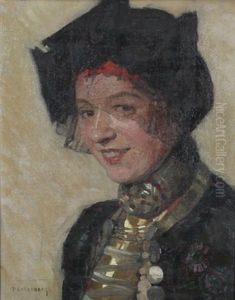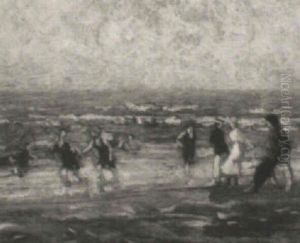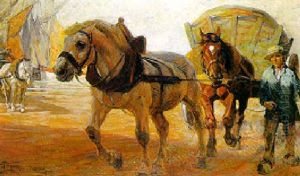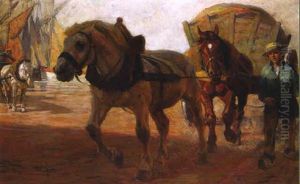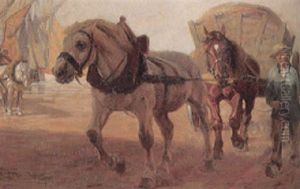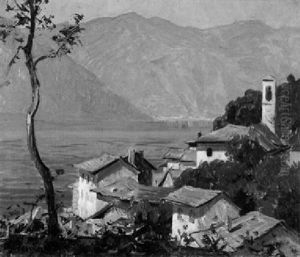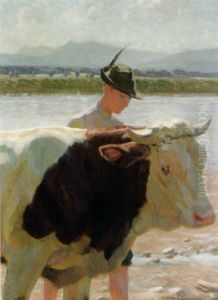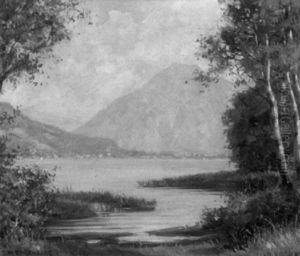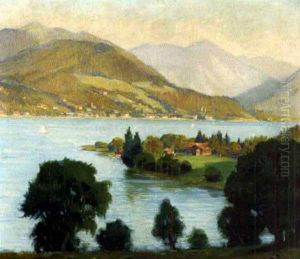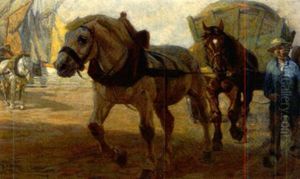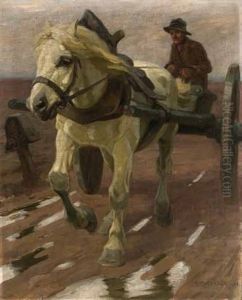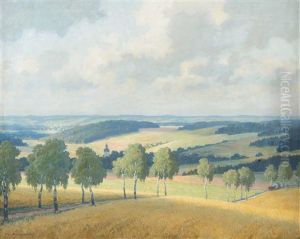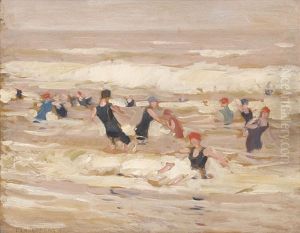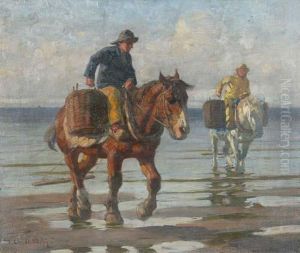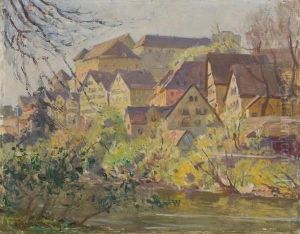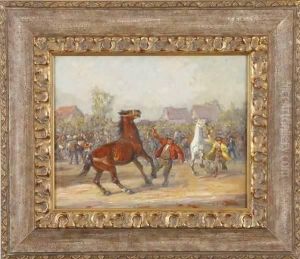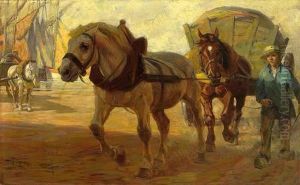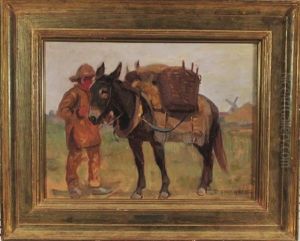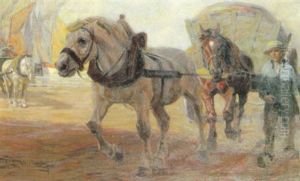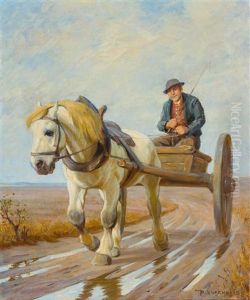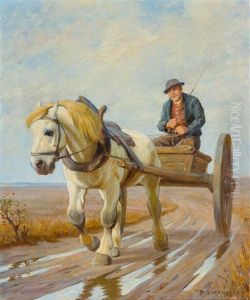Paul Ehrenberg Paintings
Paul Ehrenberg was a German painter and graphic artist born on June 18, 1876, in Chemnitz, Saxony. He is known for his contributions to the field of painting and etching, particularly for his landscapes, portraits, and still lifes that often captured the essence of the German countryside and its inhabitants with a sensitive and delicate touch.
Ehrenberg initially studied architecture in Dresden before turning to painting. He enrolled at the Dresden Academy of Fine Arts, where he was influenced by his teachers, Ferdinand Pauwels and Gotthardt Kuehl, who were notable figures in the late 19th-century German art scene. His style was also affected by the growing trend of Impressionism, although he never fully embraced the movement, instead developing a distinctive approach that combined elements of realism and impressionistic sensitivity to light and atmosphere.
In the early 20th century, Ehrenberg became associated with the Dachau Artists' Colony, a group of artists who settled in Dachau, drawn by the area's picturesque landscape and the opportunity to work in a rural setting that was yet close to Munich’s vibrant art scene. Here, he found inspiration in the natural surroundings and the traditional Bavarian culture, which he depicted in his art.
Throughout his career, Ehrenberg exhibited his works in numerous shows and was an active participant in the Munich Secession, a group that sought to break away from the traditional academic style of the time and promote a more modern and progressive approach to art. His works were characterized by a keen observation of his subjects, a nuanced use of color, and a gentle, almost poetic approach to composition.
Paul Ehrenberg passed away on October 20, 1949, in Munich. Although not as widely known today as some of his contemporaries, his oeuvre remains a testament to the artistic transitions that marked the turn of the 20th century in Germany, reflecting the interplay between traditional motifs and the evolving modernist aesthetic.
